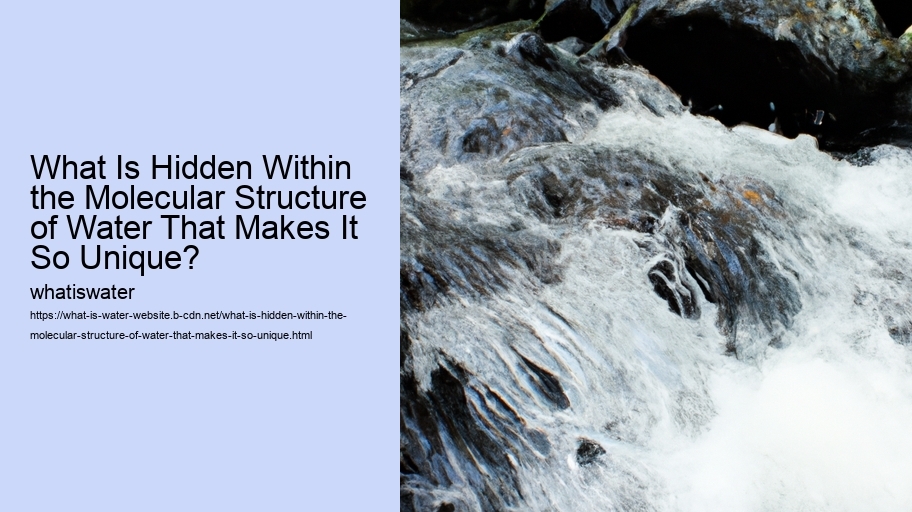At a basic level, water's polarity is what sets it apart from other substances. Due to the electronegativity difference between oxygen and hydrogen, electrons are unequally shared in the covalent bonds, granting water a polar nature. This polarity enables water molecules to form hydrogen bonds with each other – an attraction between the slightly positive hydrogen atom of one molecule and the slightly negative oxygen atom of another.
Hydrogen bonding is responsible for many of water's distinctive features. Aquifers For instance, its high specific heat capacity allows it to absorb substantial amounts of heat without a significant change in temperature.
What Is Hidden Within the Molecular Structure of Water That Makes It So Unique? Aquatic Ecosystems - Aquatic Ecosystems
- Aquifers
- Aquatic Ecosystems
- Aquaculture
Molecule Furthermore, these bonds are also why water has such high cohesion and surface tension – phenomena that enable insects like the water strider to walk on its surface. Aquaculture Also noteworthy is adhesion; water’s ability to cling to other surfaces plays a crucial role in processes such as capillary action which helps transport nutrients and sap within plants.
Another consequence of hydrogen bonding is that ice floats on liquid water because it expands upon freezing due to the formation of a lattice structure. This phenomenon ensures aquatic life can survive under ice-covered surfaces during cold periods by insulating warmer waters below.
Water’s unique solvent capabilities stem from its polarity too; it dissolves more substances than any other liquid which leads to its nickname: "the universal solvent." This characteristic facilitates biochemical reactions both within living organisms and in their environments by enabling compounds to be carried in solution and react together easily.
In summary, while comprised only of three atoms, water's complex behavior derives from the special way these atoms interact at a molecular level via polarity and hydrogen bonding. Hydrologic Cycle These interactions bestow upon it extraordinary qualities making it indispensable for life as we know it – moderating climates, shaping ecosystems, aiding chemical processes, supporting biological functions – all encapsulated within this vital molecule H2O.
